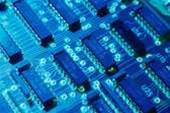
The company said at a strategic update meeting in London that the new chip is just the first step in a long chain of energy efficient and environmentally conscious designs.
Richard Brown, vice president of corporate marketing at Via, said that the gigahertz wars are over, and that changing customer awareness now puts the focus squarely on power consumption and performance per watt.
Via is best known for its chipsets but has focused on a complete platform design in recent years providing a low-power embedded board with its mini-ITX form factor boards and more recently its even smaller nano-ITX and pico-ITX boards.
The company is now taking the ecological theme further with its Clean Computing initiatives designed to tackle various aspects of environmental damage.
Lead-free manufacturing adhering to regulations concerning the restriction of certain hazardous substances, along with solar computing, carbon-free systems and energy efficient designs, are all part of Via's strategy to take the green initiative.
The firm's carbon-free computing aims to offset the carbon emissions from processors and systems with reforestation projects and renewable energy projects.
Via measures these effects in what it calls 'Tree Marks' by calculating the average power usage of the processor or system over a three-year period and hence the number of trees required to remove the equivalent amount of CO2.

.png&h=140&w=231&c=1&s=0)
_(22).jpg&h=140&w=231&c=1&s=0)





_(26).jpg&w=100&c=1&s=0)

 iTnews Executive Retreat - Security Leaders Edition
iTnews Executive Retreat - Security Leaders Edition












_(1).jpg&h=140&w=231&c=1&s=0)



